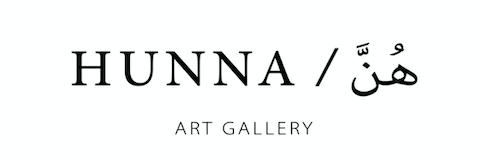Defying Euro-centric views on womanhood represents an ongoing process of deconstruction and collective efforts. After visiting museums and exhibitions in European countries filled with art made by male artists and only recently dedicating attention to the histories of female artists (a recent example being the 2020 “Tale of Two Women Painters: Sofonisba Anguissola and Lavinia Fontana”at the Prado Museum in Spain), I became more and more aware of the importance of a ‘woman’ history outside hegemonic paradigms and their representations in art and cultural institutions. With this interest and curiosity, I visited “As We Gaze Upon Her” at Warehouse421, an exhibition, out of the West, focusing on her-stories of ‘‘woman and its various forms [...]—an idea and a body” (Banat Collective, 2021), in particular through the lens of the WANASA region (West Asia, North Africa and South Asia).
(...)
Vindication of the Body presents works that deal with figuration, sometimes alluded to, and depiction of the body in place of something else. In a liminal space between evidence and concealment, the body is present even in case of its absence. To connect the following three artworks is the body as a vessel to investigate and deconstruct. Augustine Paredes’s Good Night, Sweet Dreams (2021) installation uses a self-portrait to tell stories of displacement in its intimate moments. Likewise, Amina Yahia’s Te'rafy (2021) painting resonates with fragmentation and quest for the female identity in all its different forms navigating what is considered appropriate or not and including depictions of women of different ages in the same pictorial units. Between figuration and abstraction, Alymamah Rashed’s Arak Kul Yawm Li’Anak Tahwa Ma Katalt / I See You Everyday Because You Have Adored What You Killed (2020) finds in the figure of “Muslima Cyborg,” ‘a metaphysical figure [that] stages a conflict with voyeurism through vivid, delicate mark-making and composition’ (Banat Collective, 2021).
(...)
“As We Gaze Upon Her” quotes in its curatorial texts excerpts from North-American and European thought (from the German philosopher Georg Wilhelm Friedrich Hegel until Canadian author Margaret Atwood) risking to frame the sections into a general discourse on feminism. Nonetheless, the artworks tell the stories of womanhood and female experiences from the region’s perspective, either in agreement or in opposition to the quotes. The feminist ideas of finding new ‘weapons’ resonate with the ambition of “As We Gaze Upon Her” to present a different story, often an uncertain story. As BICAR mentor Rohit Goel expressed in the curatorial presentation, referring to the curatorial process of deconstruction is a ‘groundless ground’ for the risks of losing oneself. The risk paid off for the quality of the exhibition that offers a contemporary perspective on female historical (mis)representation and the legacies in the present for the arts and politics of womanhood in the region. While displaying personal and collective stories of being a woman, the exhibition achieves a sense of genuine curiosity for everything concerning the identity and body, aesthetics and politics, of the “woman,” applicable in WANASA and beyond.
---
Continue reading on Global Art Daily.

